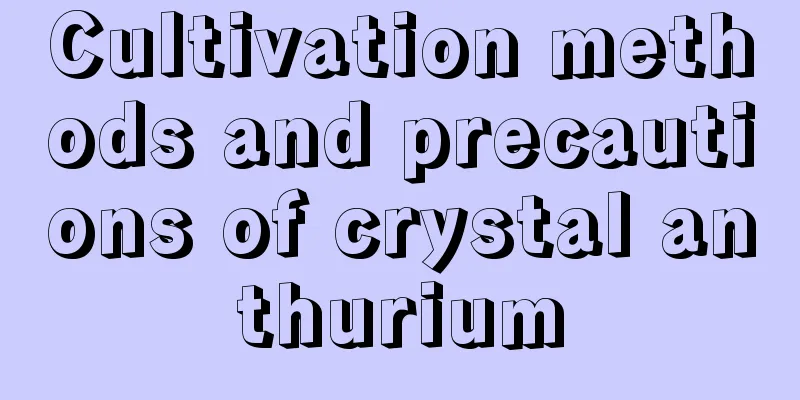Cultivation methods and precautions of crystal anthurium

1. WateringIts drought-intolerance requires us to give it sufficient water when growing it, and water it every two to three days. Tap water is the best choice for the growth of crystal anthuriums. Natural rainwater is also a good source of water for growing it, so you can put it outdoors when it rains. It is important to maintain a relatively high air humidity, especially in the summer when the temperature is particularly high. In winter, watering should be done directly between 9 am and 4 pm, when the temperature is a little higher, to avoid frostbite due to low temperatures. 2. LightingLight is very important. Light that is too weak or too strong will not affect the final growth. If the light is too weak, the final growth will not be vigorous enough. If the light is too strong, the leaves will change color and be burned by the strong light. On sunny days, block out 75 percent of the sunlight. There is no need to block out light in the morning and evening. The demand for light is different at different times. The requirement for light is relatively low when it is blooming, so you can shade it to prevent the flowers from changing color due to excessive light. 3. TemperatureThe temperature should be kept below 30℃. If the temperature is too high in summer, you can spray water or mist to increase the humidity in the air to avoid damage caused by high temperature. If the indoor temperature is lower than 15℃ in winter, the temperature should be raised to avoid frost damage and protect it safely through the winter. 4. FertilizationBecause there is a layer of wax-like substance on the surface of its leaves, it is difficult for it to absorb fertilizer well, so fertilizing its roots will be much more effective. The best time to apply fertilizer is generally between 8 a.m. and 5 p.m., but in winter or early spring, fertilizer should be applied between 9 a.m. and 4 p.m. Note that two hours after fertilizing, you should spray water on the leaves to wash away the fertilizer remaining on the leaves. Keeping the leaves clean can avoid the growth of algae. 5. Picking budsDuring its growth, some small buds will easily grow. If they are not removed, the nutrients of the anthurium will be absorbed, so when these buds appear, they must be removed in time. |
<<: A comprehensive list of succulent plants with fragrance
>>: Can geraniums be grown indoors?
Recommend
What kind of flower pot is suitable for dragon beard tree
What kind of flower pot is suitable for the drago...
How to grow white moon shadow succulent
1. Soil When growing white moon shadow succulent,...
This super fertilizer is only available in rural areas. Flowers will grow rapidly after eating it, and it doesn’t cost a penny!
Use ash from the bottom of the pot to grow flower...
The best time to plant freesias. How long does it take from planting to flowering?
Planting time of freesia In different regions, th...
Kumquat grafting time
1. Grafting time The grafting time requirements a...
How often should I change the water for small fish?
Keeping fish is a hobby that can beautify your ho...
Does ginger lotus prefer shade or sun?
Does ginger lotus prefer shade or sun? Ginger lil...
How to grow petunias in autumn
1. Is autumn maintenance important? For petunias,...
How to care for tiger skin plant in winter
1. Cold and heat preservation It is a thermophili...
Cultivation methods and precautions of red Guanyin bamboo
Red Guanyin Bamboo is a high-quality ornamental b...
The value of Cotinus coggygria
Medicinal It is a plant that can be used as medic...
Characteristics of Chlorophytum
1. Appearance characteristics The leaves of spide...
What to do if the goldfish plant loses its leaves
Too much light When growing goldfish spider plant...
The efficacy and function of peacock wood
Common uses of peacock wood Ornamental use As an ...
Cultivation methods and precautions of iron chopsticks
1. Astigmatism The helleborus likes plenty of dif...









